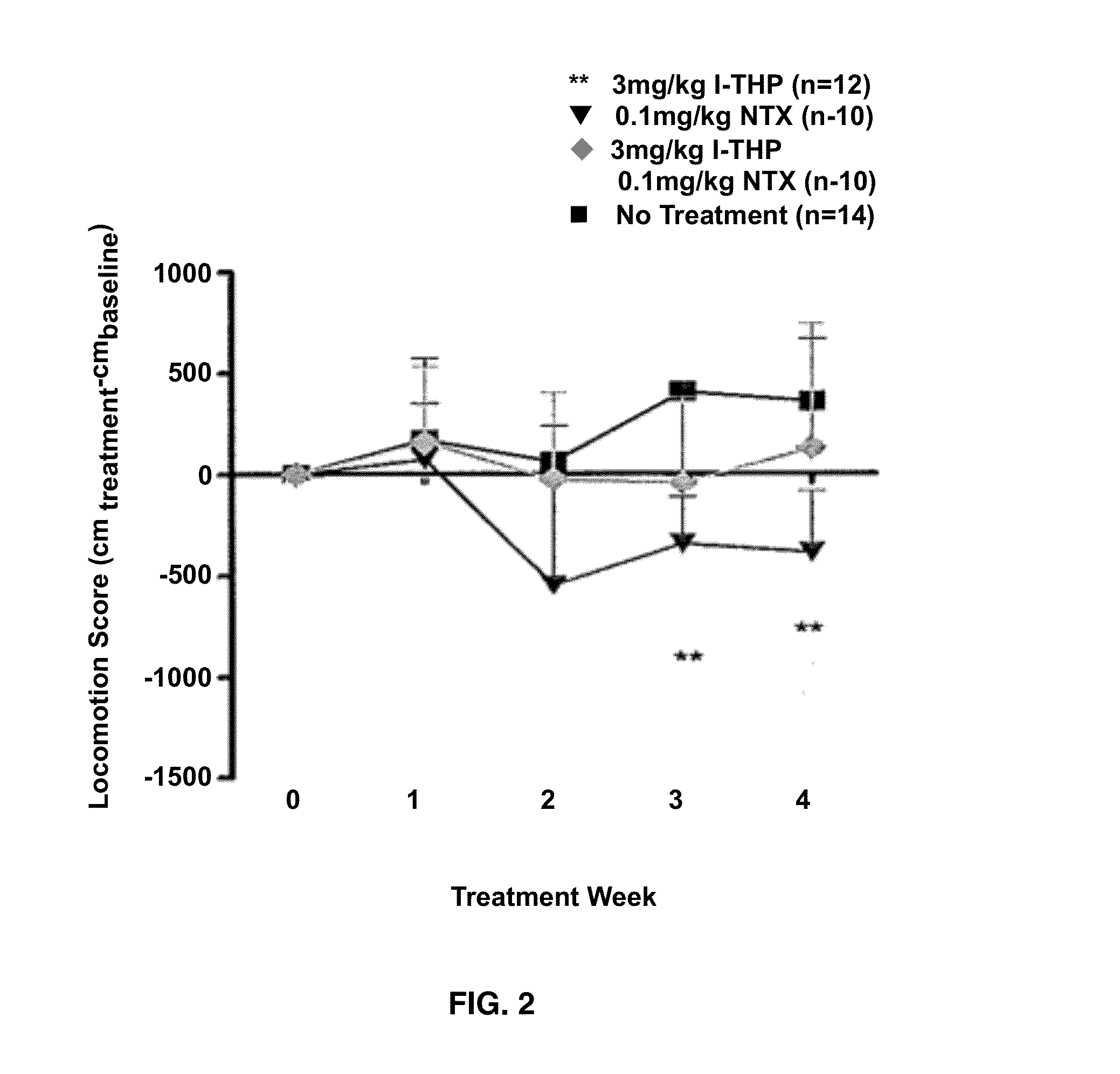Combination Dopamine Antagonist and Opiate Receptor Antagonist Treatment of Addictive Behavior
a technology of opiate receptor and dopamine antagonist, which is applied in the field of combinatorial therapies for addiction related or neurological diseases and disorders, can solve the problems of dependence, addiction and other adverse health consequences, and the current treatment is limited, and the effect of existing treatments is limited
- Summary
- Abstract
- Description
- Claims
- Application Information
AI Technical Summary
Benefits of technology
Problems solved by technology
Method used
Image
Examples
example 1
Effects of Treatment on Cocaine Induced Reinstatement of CPP
[0057]Fixed dose l-THP / LDN (3 mg / kg / 0.1 mg / kg) were tested in mouse model of CPP. Treatment started after the animal had established a CPP and ended when the animal displayed extinction. While the groups received saline and 0.1 mg / kg naltrexone did not have significant effect on the reinstatement, the groups received 3 mg / kg l-THP or 3 mg / kg l-THP and 0.1 mg / kg naltrexone displayed a significant attenuation on cocaine reinstatement. The combination group exhibited a greater reduction in reinstatement than l-THP alone (FIG. 1).
example 2
Treatment Effect on Locomotor Activity
[0058]FIG. 2 shows that the 3 mg / kg l-THP treatment reduced locomotor activity significantly during the treatment. l-THP co-administered with LDN reversed the significant decrease in locomotion from the l-THP; and 0.1 mg of Naltrexone alone did not display significant effect on locomotion, indicating a possible synergy occurred at the combination that results in the reverse of l-THP induced locomotor inhibition.
example 3
Naltrexone Induced Withdrawal
[0059]When high dose of naltrexone (30 mg / kg, or 15 mg / kg) was co-administered with l-THP in cocaine addicted mice withdrawal symptoms occurred (FIG. 3). This effect was attributed to cocaine's up regulation of endogenous opioids and the significant blockade of opioid receptor by naltrexone. However, lower doses of naltrexone (1 mg / kg, 0.3 mg / kg and 0.1 mg / kg), co-administered with l-THP did not produce withdrawal, indicating it is safe to use LDN in cocaine addicted animals.
PUM
| Property | Measurement | Unit |
|---|---|---|
| physical dependence | aaaaa | aaaaa |
| half life | aaaaa | aaaaa |
| physical | aaaaa | aaaaa |
Abstract
Description
Claims
Application Information
 Login to View More
Login to View More - R&D
- Intellectual Property
- Life Sciences
- Materials
- Tech Scout
- Unparalleled Data Quality
- Higher Quality Content
- 60% Fewer Hallucinations
Browse by: Latest US Patents, China's latest patents, Technical Efficacy Thesaurus, Application Domain, Technology Topic, Popular Technical Reports.
© 2025 PatSnap. All rights reserved.Legal|Privacy policy|Modern Slavery Act Transparency Statement|Sitemap|About US| Contact US: help@patsnap.com



